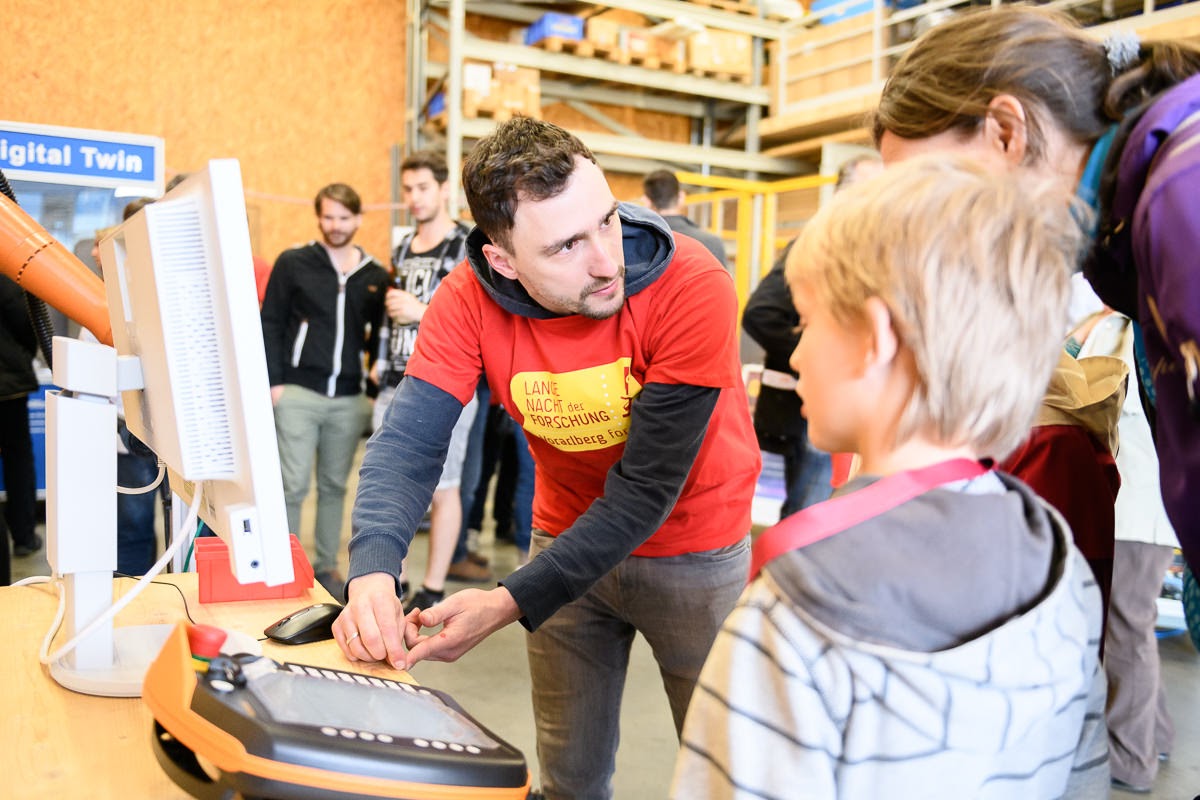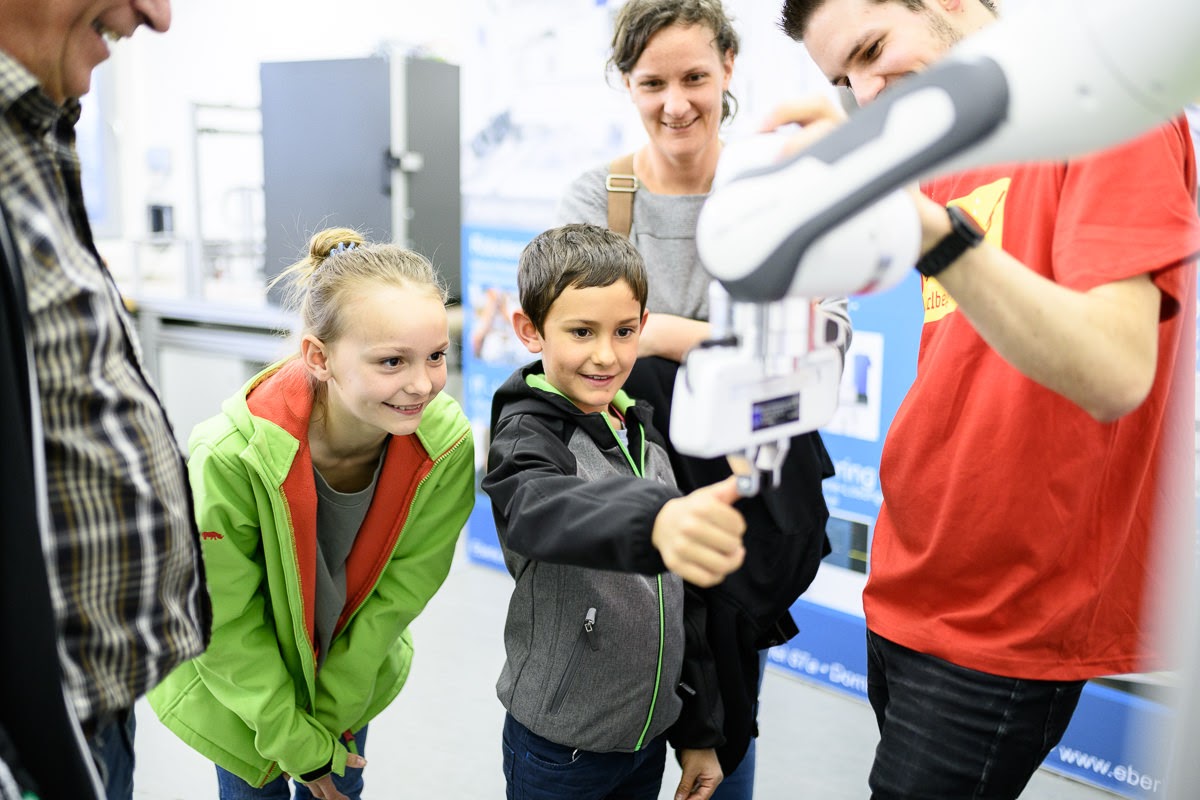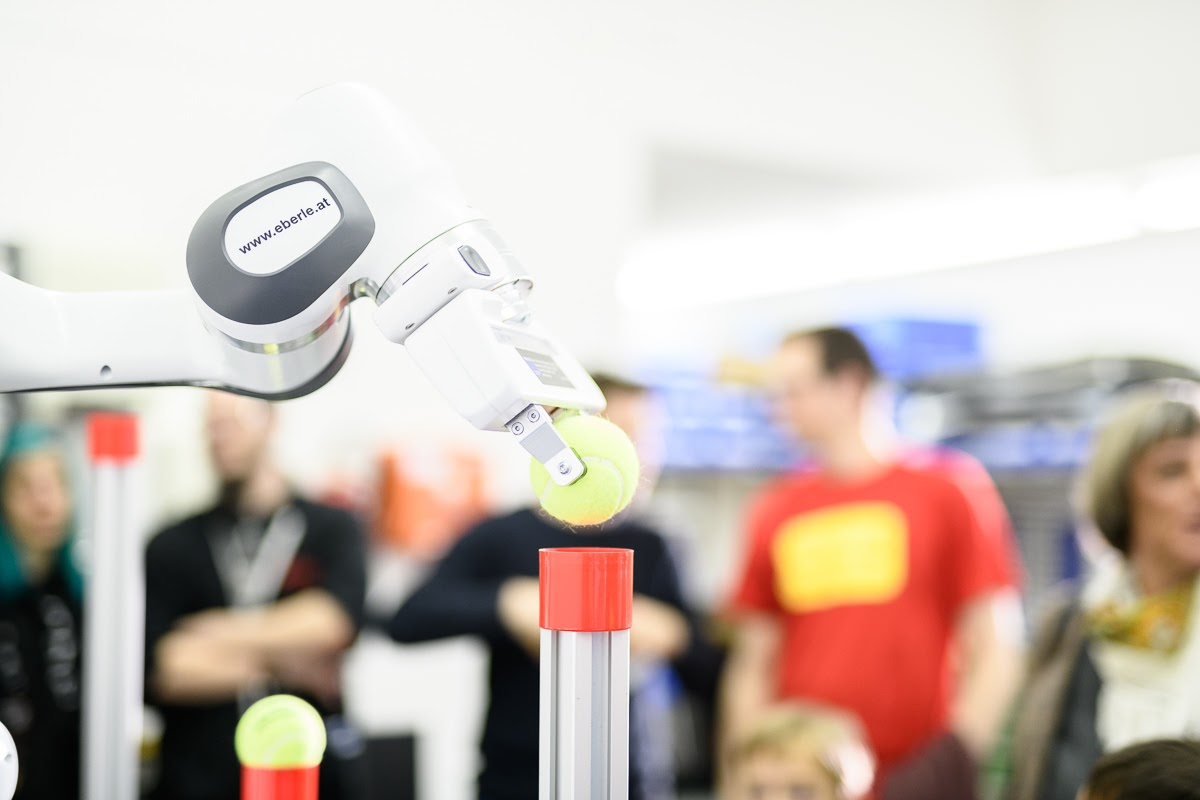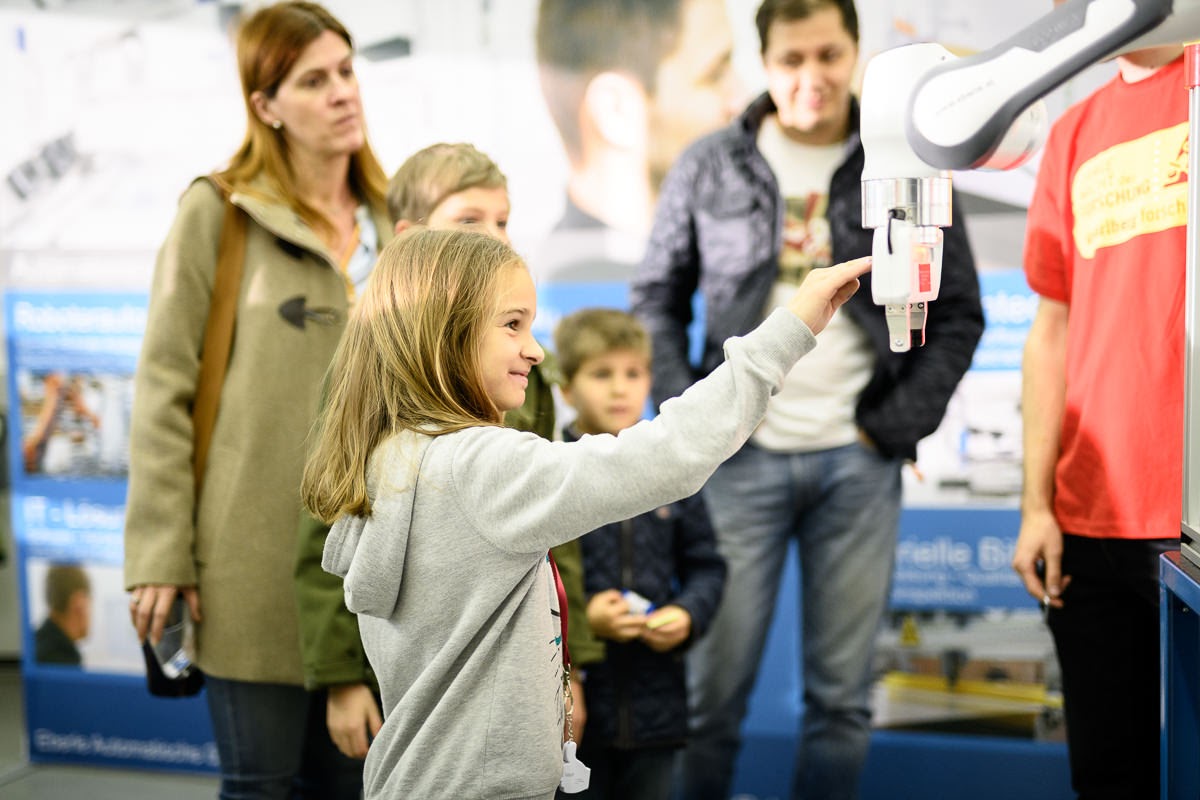Long Night of Research 2024
-

©Eva Sutter
-

©Eva Sutter
-

©Eva Sutter
-

©Eva Sutter
Austria’s biggest science event will take place again on May 24, 2024 and we will also be giving an insight into our exciting work. From 5 p.m. to 11 p.m., children, young people and adults can discover a total of 118 research stations at ten locations in Dornbirn and Lustenau. The Long Night of Research aims to show what research and science from Vorarlberg can do.
Discover robots as work colleagues, table football opponents, chocolate suppliers and door openers
Admission is free and we will be showing everything to do with robotics, digitalization, automation and technology.
Travel from all over Vorarlberg by bus and train is free of charge and our location can be reached by shuttle bus line 1.
OUR STATIONS
- Can artificial intelligence (AI) learn to play table soccer?
- Does the digital ball roll as fast as the real ball?
- How do humans and robots talk to each other?
- Is artificial intelligence a door opener?
- Can cameras count like humans?
- Can your smartphone control our robot?
PROGRAM FOLDER
The program folder with our station descriptions to read online
WEBSITE
www.langenachtderforschung.at/vorarlberg
(The website with all stations and information)
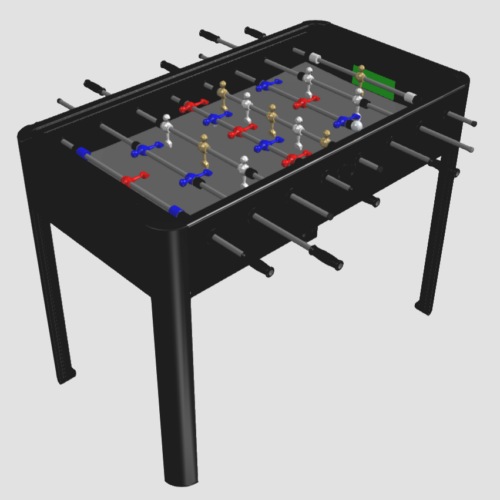
Can an artificial intelligence (AI) learn to play table soccer?
Have you ever played table soccer? Not so easy, is it? To play well, you need a table, other players and a lot of practice. We ask ourselves whether and how artificial intelligence (AI) can learn this exciting game. What does it need? How can an AI “practise”? And can it ultimately play better than a human?
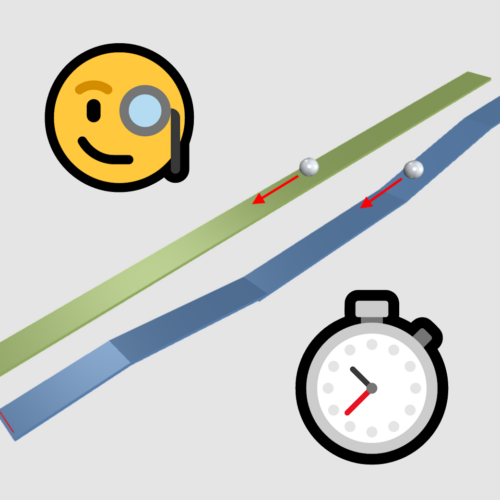
Does the digital ball roll at the same speed as the real ball?
Can a digital twin not only support industry, but also simulate physical conditions and demonstrate them in an understandable way? You’ve probably already done some amazing experiments in physics lessons. We try out whether these experiments also work with a digital twin, i.e. a computer simulation.
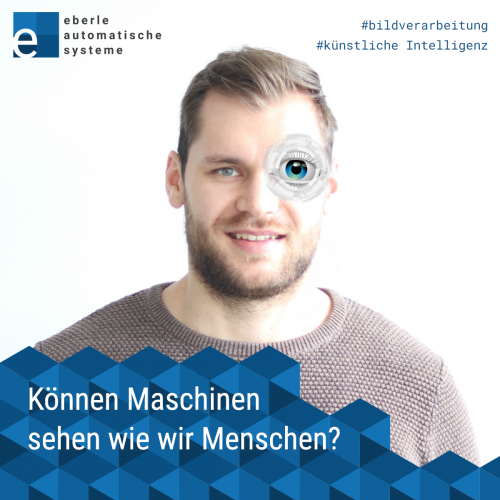
Can machines see like humans?
We rely on spatial vision to find our way around our surroundings. Only then can we perceive distances and sizes correctly. But how does spatial vision actually work? And can machines do the same? We show you how spatial vision works and how machines equipped with cameras can detect objects in space.
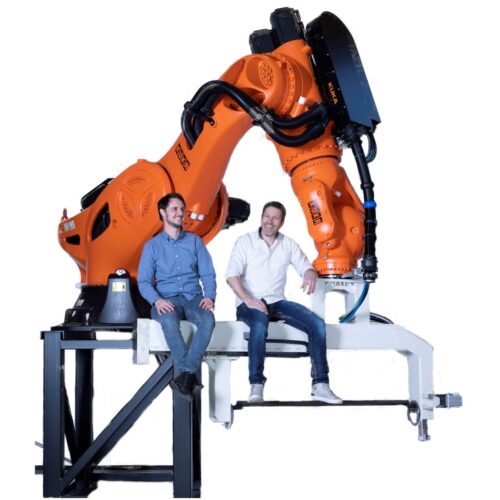
How do humans and robots talk to each other?
The idea of a collaborative lightweight robot is to work hand in hand with humans. Barriers such as protective devices are no longer necessary. Collaborative robots can therefore perform tasks directly for us or with us. The ability to control the robot with voice commands makes operation simpler and more intuitive. We’ll show you how this is possible.
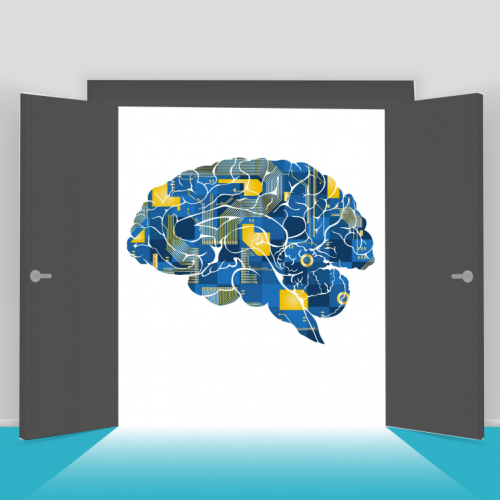
Is artificial intelligence a door opener?
To enable us to think abstractly or draw conclusions, around 85 billion nerve cells, known as neurons, are in constant use around the clock in our brain. An incredibly complex structure! And this is to be artificially imitated? Not so easy! We’ll show you how artificial intelligence learns to recognize faces and automatically opens doors for you.

Can cameras count like humans?
Component inspection in industrial production is monotonous and strenuous. It’s easy to miscount or overlook something. A 100% inspection is not possible by humans. This is where industrial image processing comes in with high execution speeds and recognition rates. Specialized systems recognize, count or precisely measure any object. Can you keep up with the digital eye?
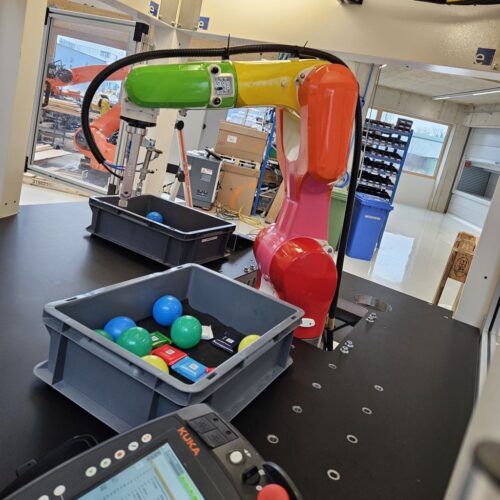
Can your smartphone control our robot?
We’ll show you how to get our robot to deliver chocolate to you using your own smartphone. Your order on your smartphone has to find its way to the robot via many systems, virtually “around the world”. Cybersecurity must not be ignored in the process.
